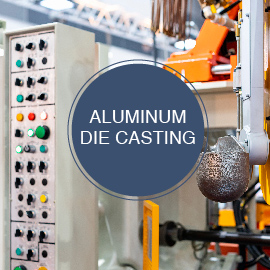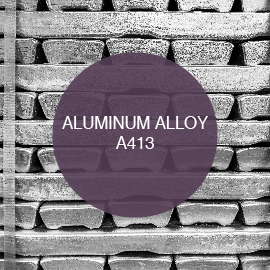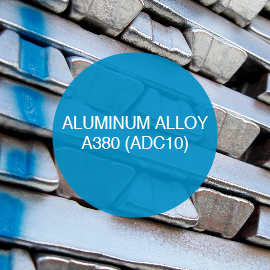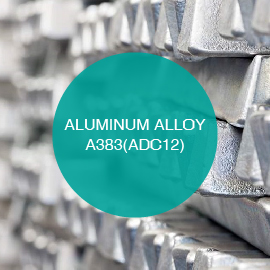ALUMINUM ALLOY B390
Because it contains between 16 and 18% silicon, B390 alloy is classified as a Hypereutectic alloy. At that percentage, silicon can no longer be dissolved in molten aluminum. As the silicon crystallizes in the metal, it reinforces the cast at extreme heat and acts as a wear-resistant hard bearing.
B390 Characteristics
While B390 is a fantastic alloy material when used properly, it does present certain difficulties. It’s not easy to mill the B390 alloy. Machining tools will wear out more quickly on primary silicon crystals than on a standard A380 casting alloy. When working with molten B390 alloy, the die caster must have a firm grasp on safe handling procedures. Silicon crystals fuse if the melt is not handled properly.
When the crystals develop to be more than 150 microns, they can produce tension in the casting and substantial machining tool wear. It requires a cold chamber casting equipment and the temperature of the melting substance must be maintained at over 700 degrees Celcius. So, significant wear is caused to the die cavity and melting furnaces by the extreme heat and moveable silicon crystals.
Advantages
- Excellent resistance to corrosion and wear
- Superior toughness and endurance
- Lightweight
- Excellent rigidity
- Great strength-to-weight ratio
- Remarkable ability to conduct electricity
- Excellent ability to prevent the transfer of heat or cold
- Comprehensive recyclability
- Outstanding qualities for the component finishing process
Applications
The production of engine cylinders is just one of numerous uses for the versatile B390 alloy. For example, pumps, mechanical components of internal combustion engines, belts, discs for stopping the car, compressor cylinder housings, etc. are manufactured using this alloy. It is used in various industries such as military, automotive, lighting, electrical, construction, etc.
Mechanical Properties
| Contents | Value |
| Brinell Hardness | 120 HB |
| Ultimate Tensile Strength | 317 MPa |
| Yield Strength | 250 MPa |
| Fatigue Strength | 170 Mpa |
| Shear Modulus | 29 GPa |
| Modulus of Elasticity | 81.4 GPa |
| Elongation | 0.88 % in 50mm |
Physical Properties
| Contents | Value |
| Melting Point (Avg) | 580 ℃ |
| Density | 2.71 g/cm³ |
| Electrical Conductivity | 27.0 % IACS |
| Electrical Resistivity | 7.0 μΩ-cm |
| Thermal Conductivity | 134 W/mK |
| Specific Heat Capacity | 963 J/kg-°C |
| Coefficient of Thermal Expansion | 18 µm/m°K |
Alloy Composition
| Contents | Value |
| Aluminum (Al) | Balanced |
| Zinc (Zn) | 0.15 % |
| Silicon (Si) | 16 – 18 % |
| Magnesium (Mg) | 0.45 – 0.65 % |
| Copper (Cu) | 4 – 5 % |
| Manganese (Mn) | 0.5 % |
| Nickel (Ni) | 0.1 % |
| Iron (Fe) | 1.3 % |
| Titanium (Ti) | 0.1 % |
| Other-Metallic | 0.2 % |
If you need help choosing the right aluminum die casting alloy for your project, you can reach out to our expert engineering team. We provide die casting solutions for various types of aluminum alloys.






